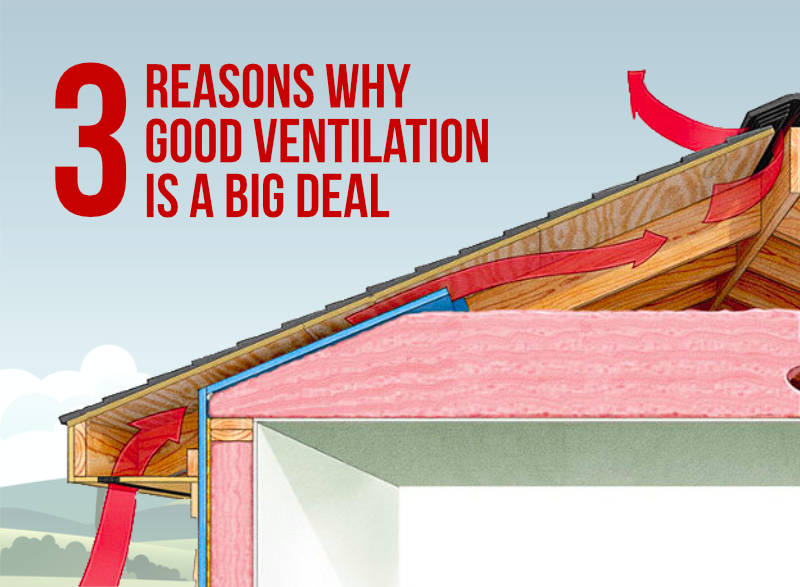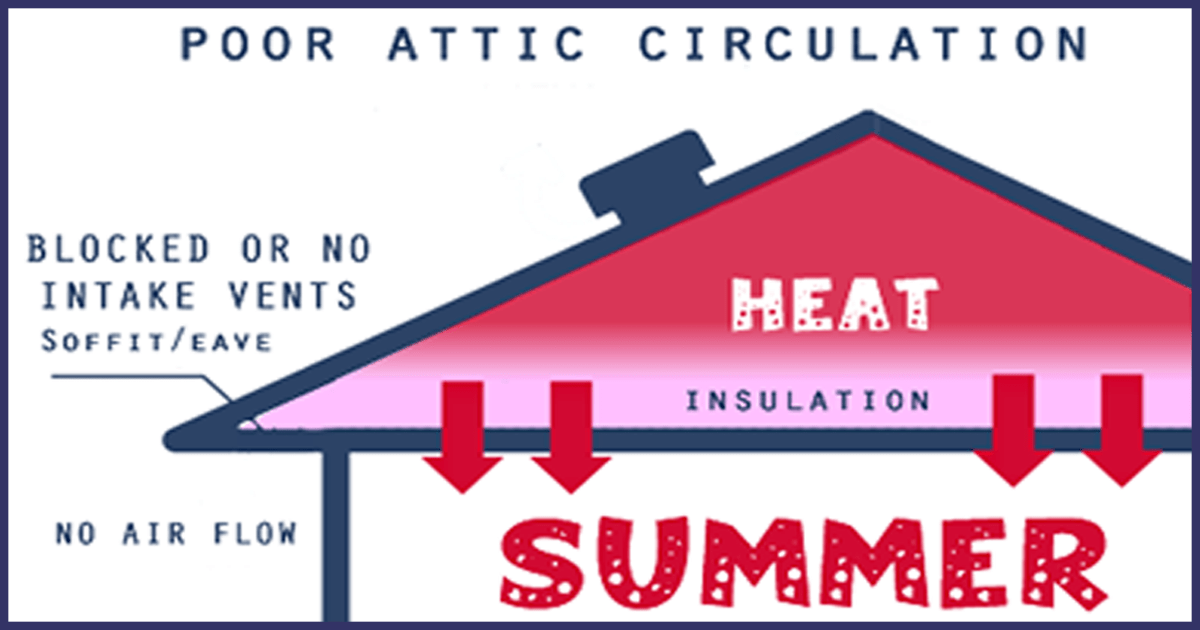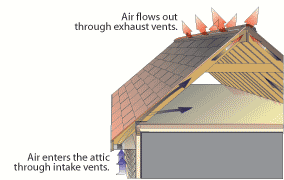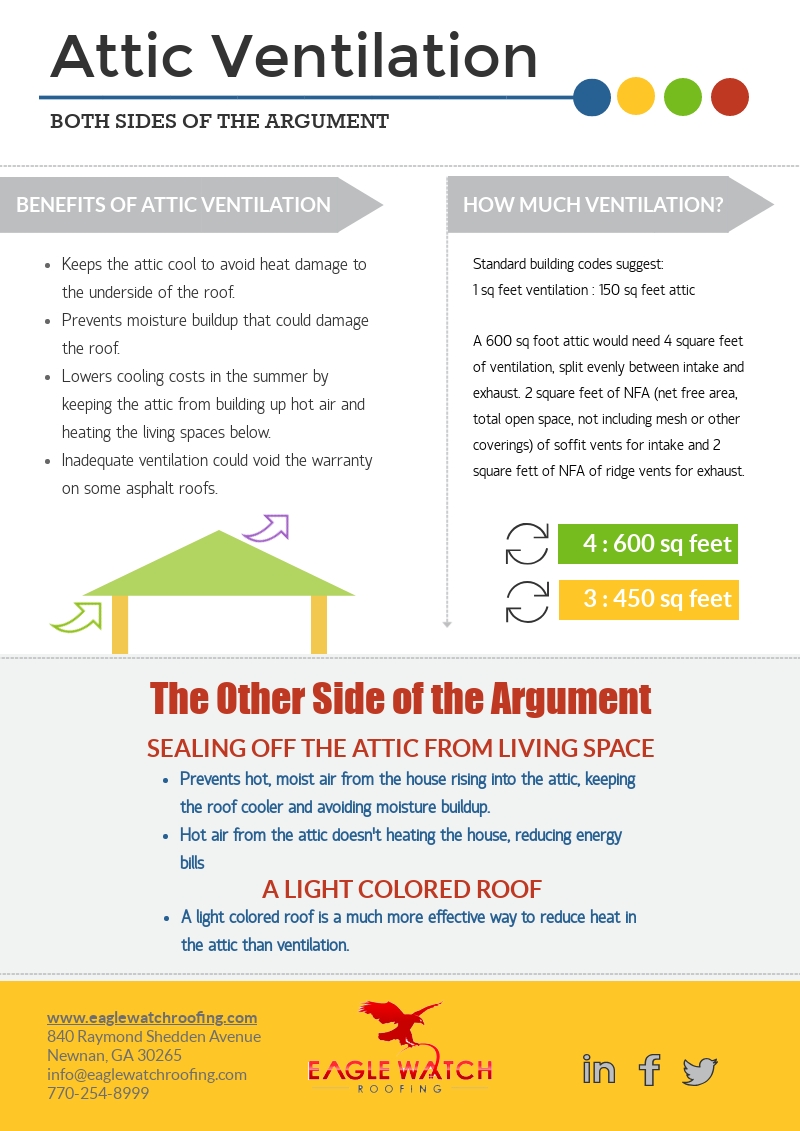Attic ventilation fans whether hard wired or powered by their own solar panels seem like a low cost and effective way to help keep your house cool.
Attic ventilation requirements and benefits.
About attic ventilation natural attic ventilation.
However the utility of attic ventilation fans is actually quite a controversial topic.
Attic ventilation serves two main functions.
Attic ventilation works on the principle that heated air naturally rises primarily utilizing two types of vents.
Intake vents located at the lowest part of the roof under the eaves.
Like you said it allows cool fresh air to enter the attic and exhausts hot moist air.
Ridge vent must me installed per the manufactures instructions.
Federal housing authority recommends a minimum of at least 1 square foot of attic ventilation evenly split between intake and exhaust for every 300 square feet of attic floor space.
Proper ventilation necessitates that fresh air is able to find its way in the attic space while allowing stale air to get out.
Lowering the temperature in the attic can help reduce air conditioning energy costs and roof deck temperature optimize the service life of a roof covering and minimize ice damming.
Good insulation reduces fan effectiveness.
The downside of attic ventilation fans.
See the benefits of attic ventilation a new roof is more than just shingles.
One last thought attic ventilation is not there to get rid of heat it is there to get rid of excess moisture accumulating from the home.
Proper attic ventilation consists of a balance between air intake at your eaves soffits or fascias and air exhaust at or near your roof ridge.
At first it may seem odd to add insulation for warmth and then purposely allow cold air to enter the attic through vents but this combination is the key to a durable and energy efficient home.
Opening windows and doors when the weather permits operating window or attic fans or running a window air conditioner with the vent control open increases the outdoor ventilation rate in a home.
Some benefits of removing excess.
Insulation at least r 38 or more is there for heating and.
This is accomplished through the placement of ventilation near the bottom of the attic space at the soffits or eaves intake and at the top peak s or ridge s of your attic space exhaust.
We wanted to insulate the attic because it will be worth it in the end.
To lower attic temperatures and to remove excess moisture.
Effective attic ventilation systems reduce damaging heat and moisture in your attic promote energy efficiency by helping to reduce the load on your air conditioner in the summer and also reduce the risk of ice dam formation on your roof.
Do not open windows and doors if doing so poses a safety or health risk to children or other family members e g risk of falling or triggering.
It can do both.



























